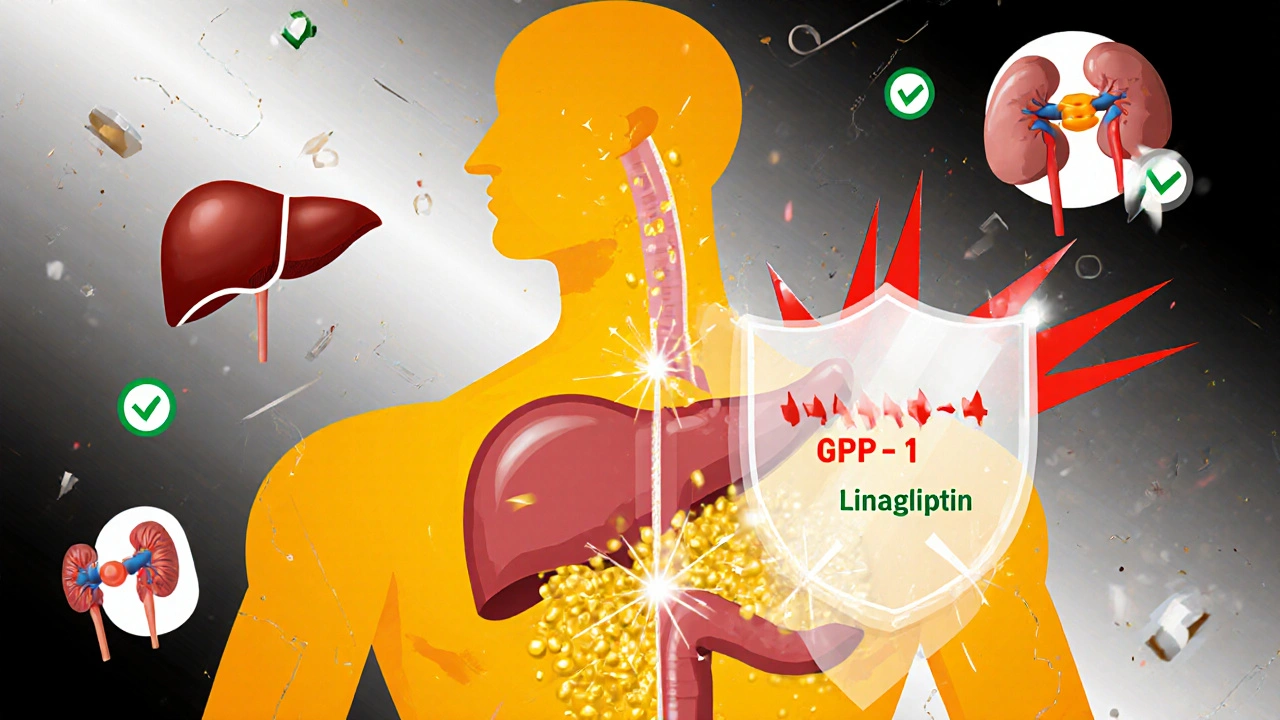SEARCH
Linagliptin: What It Is, How It Works, and What You Need to Know
When you’re managing linagliptin, a prescription medication used to lower blood sugar in adults with type 2 diabetes. It’s also known as a DPP-4 inhibitor, and it works by helping your body make more insulin when it’s needed and less glucagon when it’s not. Unlike some other diabetes drugs, linagliptin doesn’t cause weight gain or low blood sugar on its own — which is why many people and doctors choose it as a first or add-on option.
It’s part of a group of drugs called DPP-4 inhibitors, a class of oral medications that block an enzyme that breaks down incretin hormones. These hormones help your pancreas release insulin after meals. Other drugs in this group include sitagliptin and saxagliptin, but linagliptin stands out because it’s mostly cleared through your bile and gut, not your kidneys. That makes it a go-to choice for people with kidney problems who can’t take other diabetes pills safely. It’s often paired with metformin, another common diabetes drug, because they work in different ways — metformin reduces sugar production in the liver, while linagliptin boosts insulin response. Together, they give better control without extra side effects.
Linagliptin isn’t a cure. It doesn’t fix insulin resistance or reverse type 2 diabetes. But it helps keep blood sugar levels steady, especially after eating. That’s important because spikes in sugar over time damage nerves, kidneys, and blood vessels. People who take linagliptin usually take one pill a day, with or without food. No need to time it with meals. No need to adjust the dose based on what you eat. That simplicity matters — especially if you’re already juggling multiple meds.
It’s not for everyone. If you have type 1 diabetes or diabetic ketoacidosis, linagliptin won’t help. It’s also not meant to be used alone if your blood sugar is way out of control. And while it’s low-risk for low blood sugar, it can cause pancreatitis in rare cases. If you get severe stomach pain that doesn’t go away, stop taking it and call your doctor.
What you’ll find in the posts below is a mix of real-world advice, comparisons, and safety tips — not just about linagliptin, but about how it fits into the bigger picture of diabetes care. You’ll see how it stacks up against other drugs like thiazolidinediones and metformin, what to watch for when combining it with other meds, and how lifestyle changes can make it work better. There’s no fluff. Just what works, what doesn’t, and what you should ask your doctor before starting or switching.

How Linagliptin is Changing the Way We Treat Type 2 Diabetes Worldwide
Linagliptin is changing diabetes care by offering safe, once-daily blood sugar control without weight gain or kidney-related dose adjustments-especially vital for older adults and those with kidney disease.
Continue reading